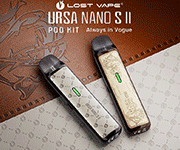Sibben
Postman
- Joined
- Sep 1, 2016
- Messages
- 129
OK, so I briefly read the source article in Environmental Science & Technology (link) this morning. Note that the "supporting information" pdf is free to access, and Table S3 essentially contains all the relevant data in the paper.
Thanks for a great interpretation of the data. If the experiment used 100% flavor as well and no VG or PG it would really put in the realm of irrelevant, would you agree?
*takes a puff*














